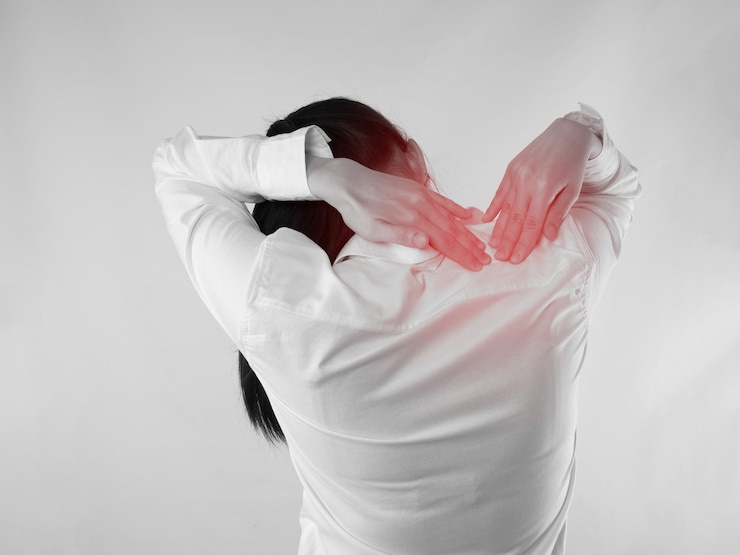Kyphosis is a spinal disorder characterised by an unnatural outward curving of the spine, which gives the impression of a rounded or stooped back. When seen from the back, an average spine appears straight. However, a kyphosis-affected spine exhibits a forward curving of the vertebrae in the upper back, which results in an unusually rounded or "humpback" appearance. Although the upper back should naturally curve to some extent, too much curvature can lead to pain, discomfort, and problems with mobility. This disorder can range in intensity from moderate to severe and affects individuals of all ages, including the elderly.
Kyphosis has various causes, such as degenerative diseases or problems with development. A leading cause of kyphosis is bad posture, which can develop from persistently hunching over or sitting with round shoulders. Kyphosis may result from acquired disorders such as the following or be congenital (existing from birth):
- Metabolic issues
- Problems involving the neuromuscular system
- Osteogenesis imperfecta, commonly known as brittle bone disease, is a disorder that results in minimally forceful bone fractures.
- A spina bifida
- A disorder known as Scheuermann's kyphosis, which is more frequent in men, causes the vertebrae in the upper back to bend forward.
Understanding the signs and symptoms of kyphosis is essential for prompt diagnosis and treatment. A distinctly rounded or bent back is one of the main symptoms, which may worsen as the condition worsens. Nonetheless, each person may have distinct symptom experiences. Among the symptoms might be:
- Variations in shoulder height
- Compared to the rest of the body, the head leans forward.
- The upper back is higher than usual when bending forward.
- Tense back thigh muscles or hamstrings.
- Although pain in the back can occur, it seldom affects daily activities to a large enough degree.
- Incontinence of the bowel or bladder.
- Trouble breathing or shortness of breath.
- Legs that are weak, numb, or tingly.
The treatment options for kyphosis vary based on the condition's severity and underlying cause. The QI Spine Clinic is a well-known facility that specialises in diagnosing and treating spinal conditions, including kyphosis. A team of spine specialists, including physiotherapists, spine surgeons, and rehabilitation specialists, usually conducts a comprehensive examination before starting any treatment at QI Spine Clinic. The degree of spine curvature and related problems may be precisely determined with cutting-edge imaging methods, including MRI scans and X-rays.
With accurate diagnosis, doctors can create personalised treatment plans that put their patients' comfort, ability to function better, and their spines' long-term health first. There are several treatments for kyphosis, including:
- Physical therapy: Exercises can help strengthen the back and abdominal muscles, relieve discomfort, and improve posture. In addition to strengthening other parts of the body, exercise can help release tight hamstrings, which can cause pressure on the pelvis and aggravate kyphosis.
- Back brace: In some cases, back braces are used. Scheuermann's kyphosis is most common in growing children. Your provider will cover the kind of brace and the recommended number of hours each day to wear it.
- Painkillers: Anti-inflammatory drugs provide relief from back discomfort.
- Surgery: A spine curvature can be managed surgically. Spinal fusion surgery is the most commonly performed surgery for kyphosis. The surgeon positions the vertebrae more straightly during this surgery.
Even with treatment, kyphosis might recur. To correct your posture, you might have to modify your way of living. This entails paying more attention to how you stand, sit, and move throughout the day. Discuss preventative measures for kyphosis recurrence with your doctor.
Kyphosis of the spine can be treated with timely attention. The curvature might not even come to your attention until the doctor mentions it during a checkup, and you might or might not feel uncomfortable with it. The treatment's objective is to prevent the curvature from worsening. QI Spine Clinic provides customised treatment and cutting-edge solutions to meet the specific requirements of individuals with kyphosis, guaranteeing the best possible results and long-term spine health


No comments yet